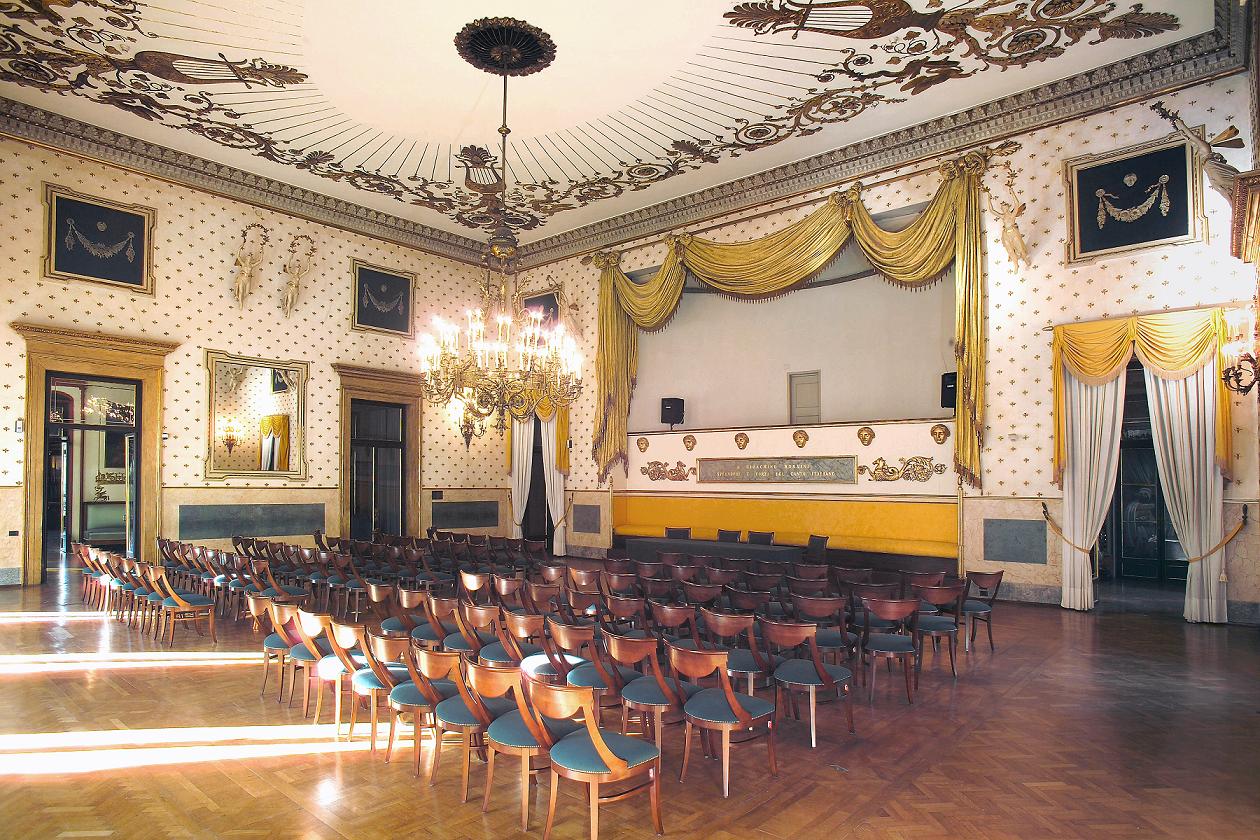Ivan is a professor of Contemporary Art at the University of Padova. We have known each other since we were two year olds, as our mothers were friends. We took very different career paths but we both ended up in academic and research jobs in Padova, and we have been able to take part together in several events where art and science are at the focus. Giving a lecture together is twice as fun!

The event took place in the historic "Sala Rossini" of Caffé Pedrocchi (see above), in the town center, and was streamed live for online participants. We were a bit surprised to see that the hall was full of attendees, but in retrospect I think the venue, the timing, and the general organization were all playing their part to maximize the attention that the event received.
Given that people are usually more interested in Art than in scientific topics I left to Ivan the better part of the hour we had, and took upon myself the task of introducing the topic, and to walk the audience through a discussion of what really is it that we talk about when we discuss Artificial Intelligence. I helped myself a bit with some material I had used earlier this year when I was invited at the Accademia dei Lincei (by its vice-president Giorgio Parisi, who a week ago won the Nobel prize in Physics!) - I will not repeat a summary of the discussion here as I did it in this other post already (which, amazingly, has already collected over 134000 page views...)
At the end of my half hour, in order to throw a bridge to the following discussion centered on art, I showed and discussed a video which showed how deep learning techniques are used to complete unfinished symphonies and works by classical music giants (Beethoven, Mahler, Schubert) - you can find the relevant material and a video at this link.
Ivan discussed how artificial intelligence is used in contemporary art nowadays. He touched on how artificial intelligence-powered instruments can be used as artistic objects (the shown case was a robotic arm which took the center stage of the Biennale 2019 in Venice) creating a performance of which they are the authors, or as support tools to produce artwork (such as robots that can sculpt marble figures and leave the artist only the final touch), or as the true subjects of the artistic production, such as a robot that creates paintings with acrylic paint on canvas. I will not go into the details of his explanation of the various trends and ideas, but you can certainly listen to the lecture in the linked video below (however, it is in Italian, unfortunately):
---
Tommaso Dorigo (see his personal web page here) is an experimental particle physicist who works for the INFN and the University of Padova, and collaborates with the CMS experiment at the CERN LHC. He coordinates the MODE Collaboration, a group of physicists and computer scientists from eight institutions in Europe and the US who aim to enable end-to-end optimization of detector design with differentiable programming. Dorigo is an editor of the journals Reviews in Physics and Physics Open. In 2016 Dorigo published the book "Anomaly! Collider Physics and the Quest for New Phenomena at Fermilab", an insider view of the sociology of big particle physics experiments. You can get a copy of the book on Amazon, or contact him to get a free pdf copy if you have limited financial means.





Comments